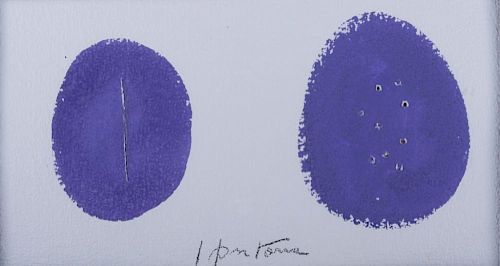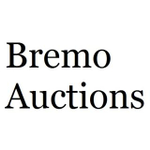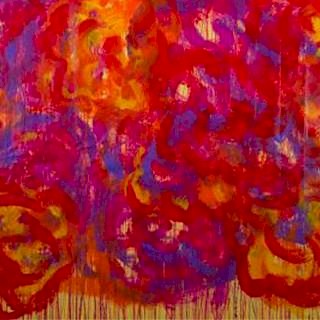Lucio Fontana Tempera on Paper "Concetto Spaziele"
About Seller
320 Pantops Center
Charlottesville, VA 22911
United States
Bremo Auctions is a full service auction house located in the historic town of Charlottesville VA. While our primary focus is on fresh-to-the-market property from distinguished Virginia Estates, institutions and private collections our individualized approach is tailored to meet the needs of each cl...Read more
Two ways to bid:
- Leave a max absentee bid and the platform will bid on your behalf up to your maximum bid during the live auction.
- Bid live during the auction and your bids will be submitted real-time to the auctioneer.
Bid Increments
| Price | Bid Increment |
|---|---|
| $0 | $5 |
| $50 | $10 |
| $200 | $20 |
| $500 | $50 |
| $1,000 | $100 |
| $2,000 | $250 |
| $5,000 | $500 |
| $10,000 | $1,000 |
| $50,000 | $5,000 |
About Auction
Oct 22, 2016 - Oct 23, 2016
Bremo Auctions info@bremoauctions.com
- Lot Description
Lucio Fontana (Italian, 1899 - 1968) abstract tempera on hand-made paper, signed to lower middle, framed under glass in painted framed with height of 14-1/8" and width of 21-3/10", having sight image height of 8-5/8" with width of 15-1/2". All measurements are approximate.Lucio Fontana was born February 19, 1899 and was an Italian-Argentinian painter and sculptor. He was mostly known as the founder of Spatialism and his ties to Arte Povera. Born in Rosario, province of Santa Fe, Argentina of Italian parents, Fontana spent the first years of his life in Italy and came back to Argentina in 1905, where he stayed until 1922, working as a sculptor along with his father, and then on his own. In 1927 he returned to Italy and studied under the sculptor Adolfo Wildt, at Accademia di Brera from 1928 to 1930. It was there where he presented his first exhibition in 1930, organized by the Milano art gallery Il Milione. In 1935 he joined the association Abstraction-Création in Paris and from 1936 to 1949 made expressionist sculptures in ceramic and bronze. In 1940 he returned to Argentina. In Buenos Aires (1946) he founded the Altamira academy together with some of his students, and made public the White Manifesto, where it is stated that "Matter, colour and sound in motion are the phenomena whose simultaneous development makes up the new art". Back in Milano in 1947, he supported, along with writers and philosophers, the first manifesto of spatialism (Spazialismo). He also resumed his ceramics works in Albisola. Following his return to Italy in 1948 Fontana exhibited his first Ambiente spaziale a luce nera (Spatial Environment) (1949), a temporary installation consisting of a giant amoeba-like shape suspended in the void in a darkened room and bombarded by neon light. From 1949 on he started the so-called Spatial Concept or slash series, consisting in holes or slashes on the surface of monochrome paintings, drawing a sign of what he named "an art for the Space Age". He then created an elaborate neon ceiling called "Luce spaziale" in 1951 for the Triennale in Milan. From 1958 he purified his paintings by creating matte, monochrome surfaces, thus focusing the viewer's attention on the slices that rend the skin of the canvas. At Documenta IV in Kassel in 1968, he positioned a large, revelatory slash as the centre of a totally white room. Shortly before his death he was present at the "Destruction Art, Destroy to Create" demonstration at the Finch College Museum of New York. Then he left his home in Milano and went to Comabbio (in the province of Varese, Italy), his family's mother town, where he died in 1968, on September 7. He was the sculptor of the bust of Ovidio Lagos, founder of the La Capital newspaper, in Carrara marble. Today Fontana's works can be found in the permanent collections of more than one hundred museums around the world.
- Shipping Info
-
Shipping is the responsibility of the purchaser. Upon request, our staff will provide the list of shippers who deliver to destinations within the United States and overseas. Some property that is sold at auction can be subject to laws governing export from the U.S., such as items that include material from some endangered species. Import restrictions from foreign countries are subject to these same governing laws. Granting of licensing for import or export of goods from local authorities is the sole responsibility of the buyer. Denial or delay of licensing will not constitute cancellation or delay in payment for the total purchase price of these lots.
-
- Buyer's Premium



 EUR
EUR CAD
CAD AUD
AUD GBP
GBP MXN
MXN HKD
HKD CNY
CNY MYR
MYR SEK
SEK SGD
SGD CHF
CHF THB
THB



















